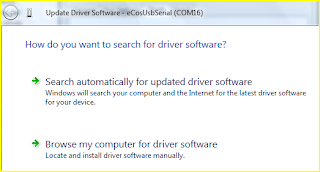updated Nov.18+26 Tutorial Dev Environment Summary with new information learned like:
- Installing gnuarm added cygwin location correctly to the windows registry
- c:\local\bin; had to be added manually to the window path for the eclipse compile to work correctly
- Testing arm-elf-insight caused the firewall to ask for certain features to be blocked/unblocked.
- Not blocking solved a previous problem where the gdb GUI did not work.
- Added links for serial download. Wondering how this .bat file and source should be packaged for the tutorial.
- At one point from make all in eclipse got the error ld error message "uses hardware FP, whereas forte uses software FP". Still not sure what combination caused this error message.
- Installed gnuarm 4.1, cygwin 1.7, java 1.6.0_22 in C:\local, because wrongly thought there was a problem, C:\Program Files, has a blank in the name. Some older notes said Forte does not work with blank in file name. Still good having the tools in one place, since hope to create a zip with tools needed.















